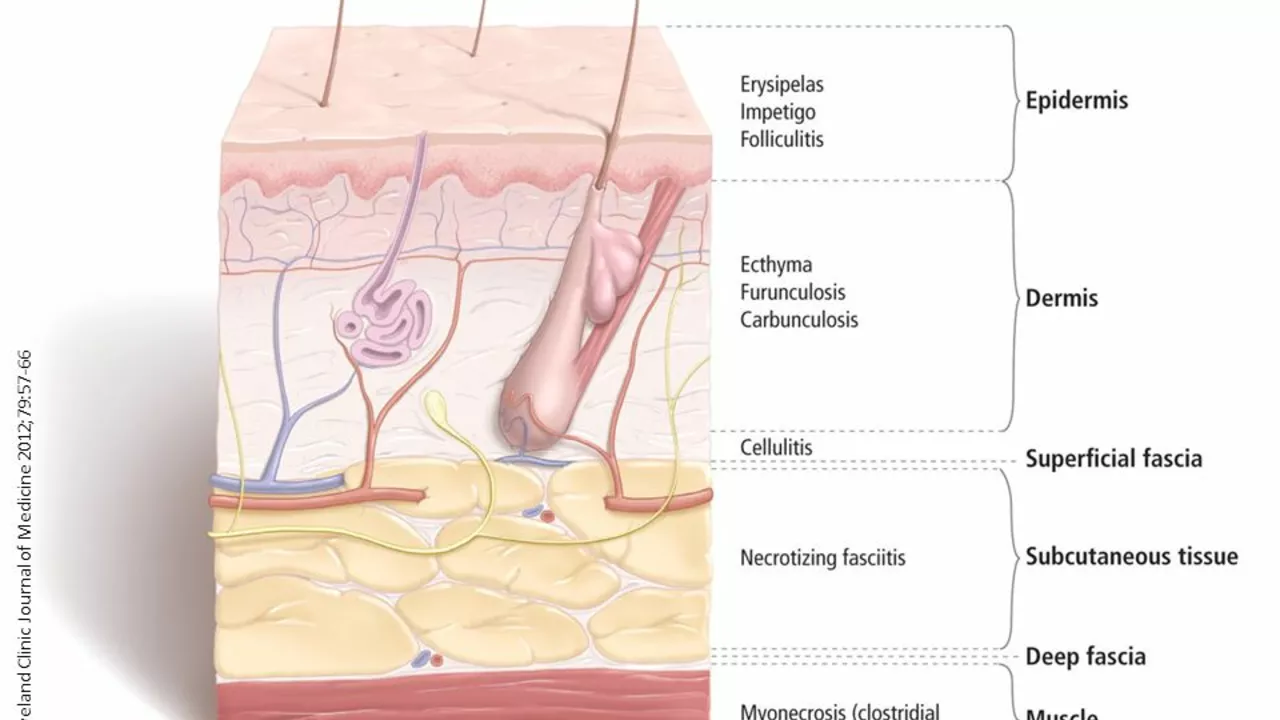Skin infections: causes, treatments, and when to get help
A small scratch or a forgotten pimple can turn into a real problem fast. Skin infections range from mild annoyances to conditions that need antibiotics or hospital care. Know the usual suspects, basic first aid, and clear warning signs so you can act before things get worse.
Common types and quick fixes
Impetigo looks like honey-colored crusts, mainly in kids. Wash the area twice daily, apply a prescribed topical antibiotic, and keep kids home until treated. Folliculitis shows as small red bumps centered on hair follicles; warm compresses and good hygiene often clear it up. Cellulitis is deeper — red, warm, swollen skin that can spread quickly; oral antibiotics are usually needed. Fungal infections like ringworm cause round, itchy patches with a clear center; antifungal creams work well when used consistently for two to four weeks.
Boils and abscesses form painful, pus-filled lumps. Small ones may drain with heat and time, but larger abscesses need a doctor to drain and prescribe antibiotics. Eczema and contact dermatitis can get secondarily infected; treat the underlying eczema and avoid scratching to reduce risk. If you use topical steroids, follow medical advice — overuse can thin skin and invite infection.
When to see a doctor & prevention tips
See a doctor if the area is expanding, painful, feverish, or if you have diabetes, a weakened immune system, or a nonhealing wound. Seek urgent care for red streaks toward the heart, severe pain, pus that won’t stop, or systemic symptoms like fever, chills, or confusion. Don’t squeeze deep lesions at home — you can push infection deeper or spread it.
Prevent most skin infections with simple habits: wash cuts with soap and water, cover wounds with a clean bandage, avoid sharing towels or razors, and keep chronic skin conditions under control. Trim nails, clean sports equipment, and shower after sweating. For athlete’s foot or ringworm, dry feet and use antifungal powders in shoes.
Use antibiotics as prescribed, finish the course, and don’t pressure a clinician for antibiotics when a topical or antifungal is enough. If someone in your household has a contagious infection like impetigo or scabies, treat close contacts and clean bedding and clothing. Ask your doctor before using over-the-counter products on big or facial infections.
If you’re unsure whether a sore needs a prescription or home care, take a photo and call a clinic. Many infections respond quickly; act early and recovery is easier.
MRSA and other resistant bacteria are getting more common. If a wound or boil doesn’t improve within 48–72 hours of care, contact a clinician — they may need a culture and a different antibiotic. Labs can guide targeted treatment and cut unnecessary prescriptions. For long-lasting or recurring rashes, book a dermatologist visit; testing can find fungal, allergic, or autoimmune causes. Simple changes like quitting smoking, improving nutrition, and keeping blood sugar controlled help skin heal faster and lower infection risk. Act early — small steps prevent trouble.
The Effectiveness of Fosfomycin in Treating Skin and Soft Tissue Infections
After researching, I've discovered that Fosfomycin is a highly effective antibiotic in treating skin and soft tissue infections. It's particularly potent against bacteria resistant to other antibiotics, which makes it a valuable option for tough infections. The drug works by interfering with the bacteria's ability to produce essential proteins, thus stopping their growth. Side effects are minimal, with gastrointestinal discomfort being the most common. All in all, Fosfomycin seems to be an excellent choice for tackling stubborn skin and tissue infections.

